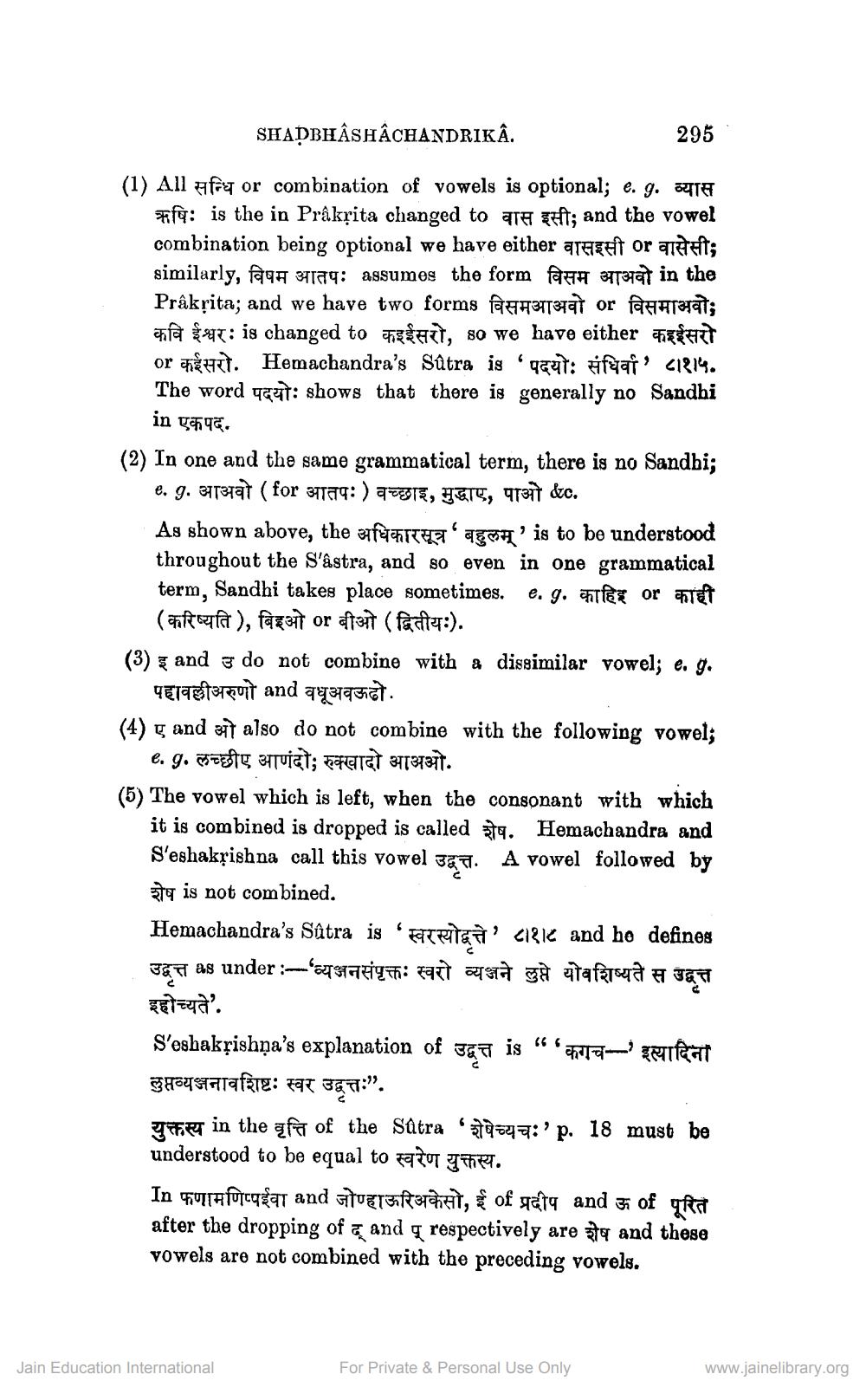________________
SHADBHASHACHANDRIKA.
(1) All सन्धि or combination of vowels is optional; eg व्यास ऋषि: is the in Prákxita changed to वास इसी; and the vowel combination being optional we have either वासइसी or वासेसी; similarly, विषम आतपः assumes the form विसम आअवो in the Prákrita; and we have two forms विसमआअवो or विसमाअवो; कवि ईश्वरः is changed to कइईसरो, so we have either कहईसरो or कईसरो. Hemachandra's Sūtra is 'पदयोः संधिर्वा ' ८1११५. The word : shows that there is generally no Sandhi in एकपद.
(2) In one and the same grammatical term, there is no Sandhi; eg. आअवो (for आतपः ) वच्छाइ, मुद्धा, पाओ &c.
As shown above, the अधिकारसूत्र ' बहुलम् ' is to be understood throughout the S'âstra, and so even in one grammatical term, Sandhi takes place sometimes. e. g. काहिr or काही ( करिष्यति ), बिइओ or बीओ ( द्वितीयः).
295
(3) इ and उ do not combine with a dissimilar vowel; e. g. पहावल्लीअरुणो and वधूअवऊढो.
( 4 ) ए and ओ also do not combine with the following vowel; e. g. लच्छीए आणंदो; रुक्खादो आओ.
(5) The vowel which is left, when the consonant with which it is combined is dropped is called. Hemachandra and S'eshakrishna call this vowel 3. A vowel followed by शेष is not combined.
Hemachandra's Sútra is 'स्वरस्योद्वृत्ते ' ८१८ and he defines उद्वृत्त as under:-‘व्यञ्जनसंपृक्तः स्वरो व्यञ्जने लुप्ते योवशिष्यते स उद्वृत्त इहोच्यते'.
S'eshakrishna's explanation of उत्त is "
लुप्तव्यञ्जनावशिष्टः स्वर उद्वृत्तः”.
'कगच---' इत्यादिना
युक्तस्य in the वृत्ति of the Satra ' शेषेच्यच: ' p. 18 must be understood to be equal to स्वरेण युक्तस्य.
Jain Education International
In फणामणिप्पईवा and जोण्हाऊरिअकेसो, ई of प्रदीप and ऊ of पूरित after the dropping of a and q respectively are and these दू पू vowels are not combined with the preceding vowels.
For Private & Personal Use Only
www.jainelibrary.org




